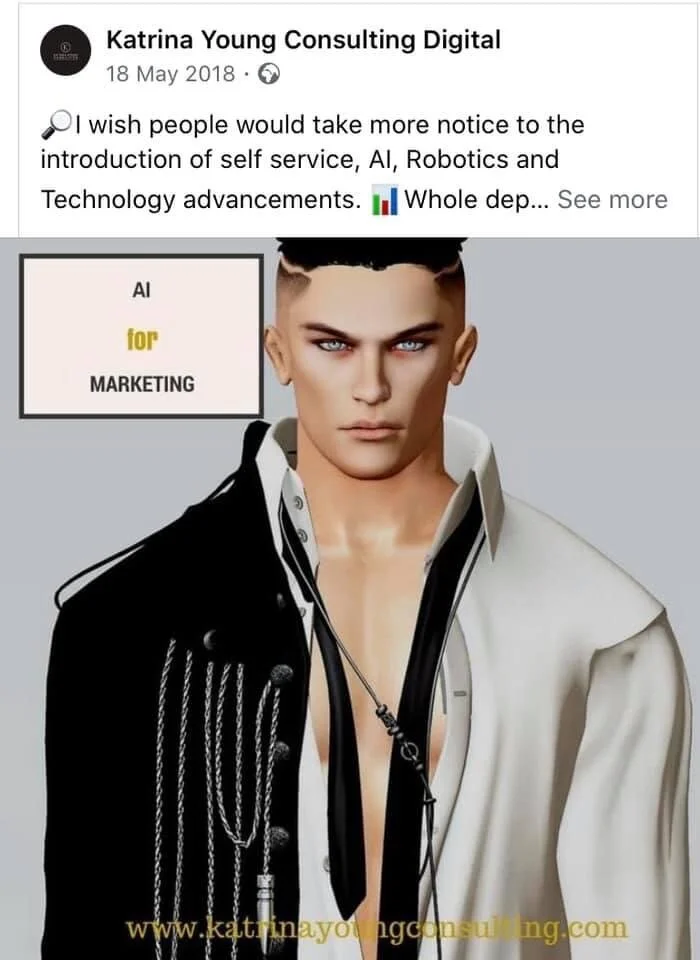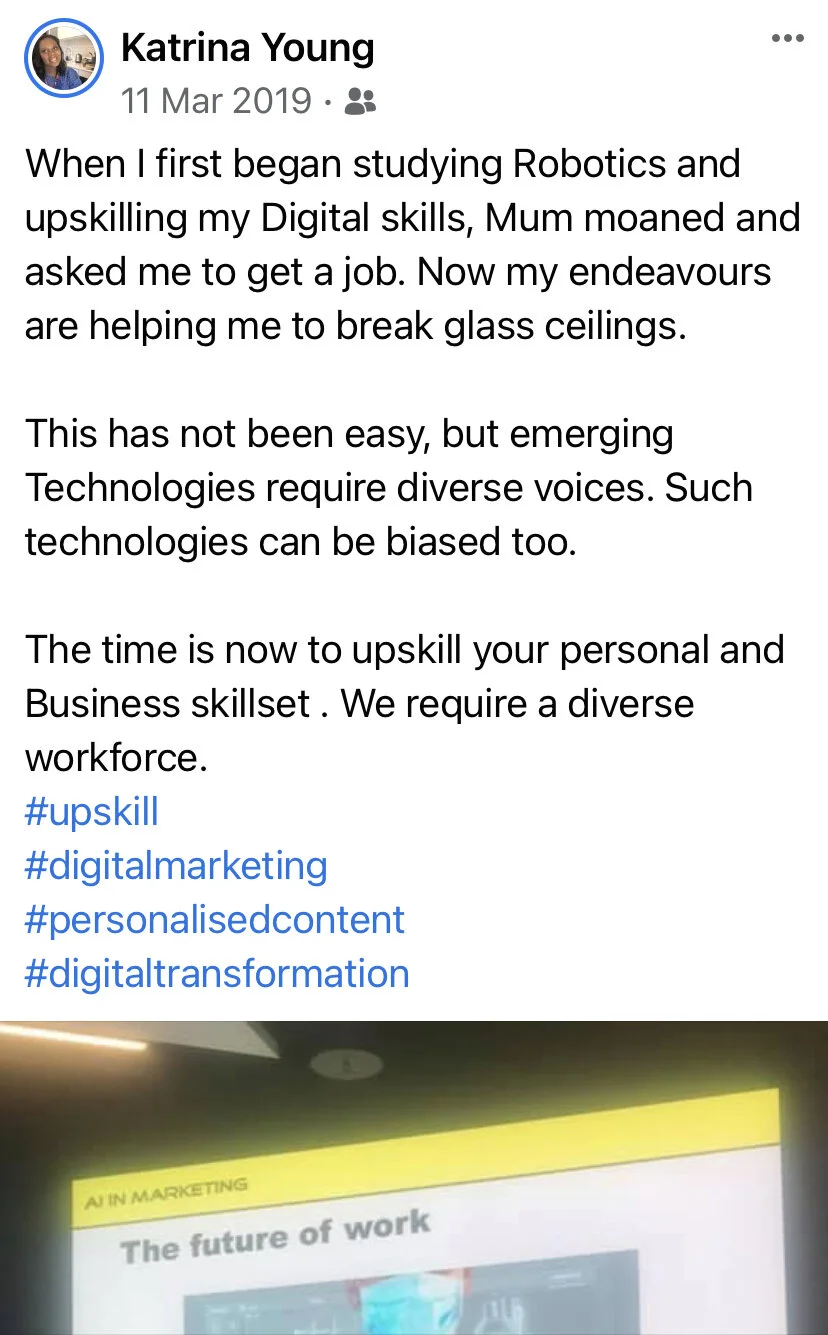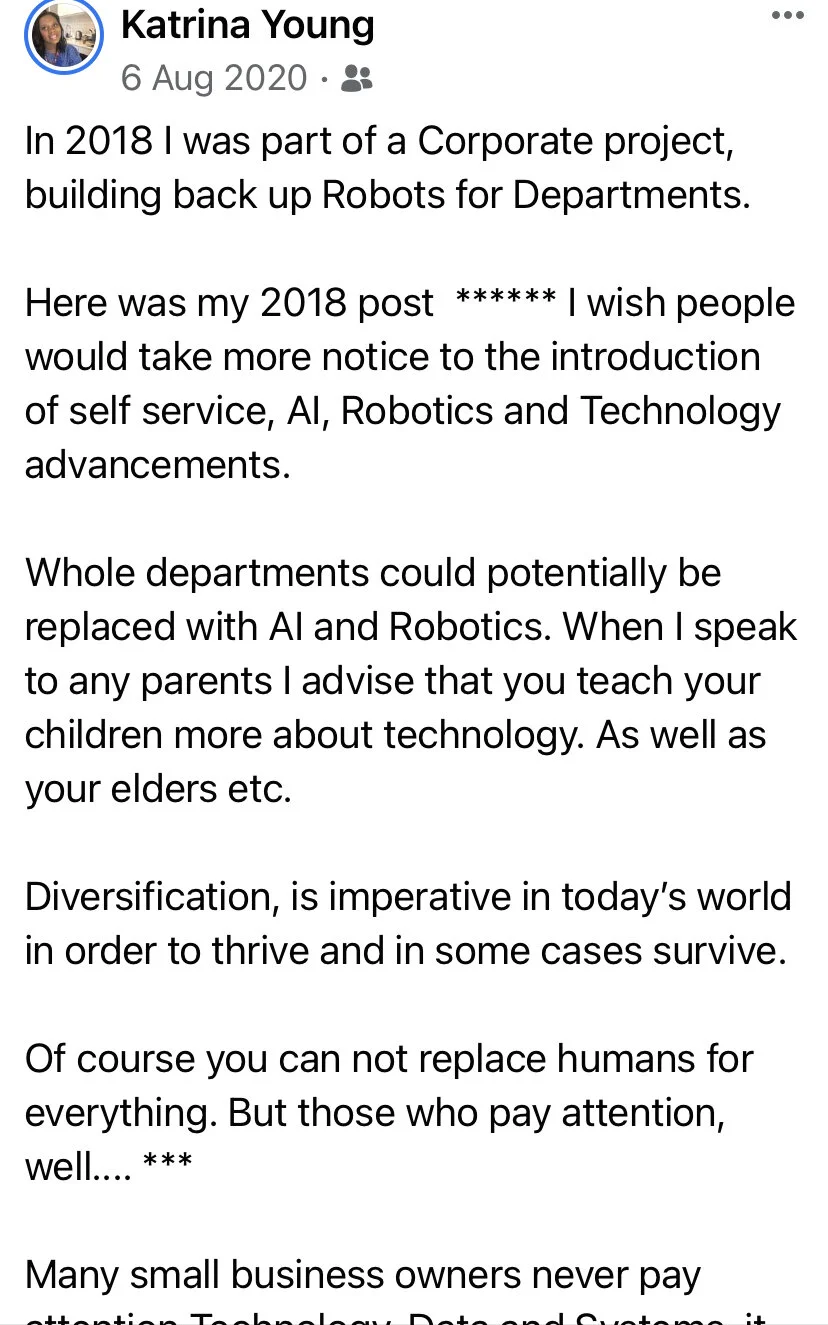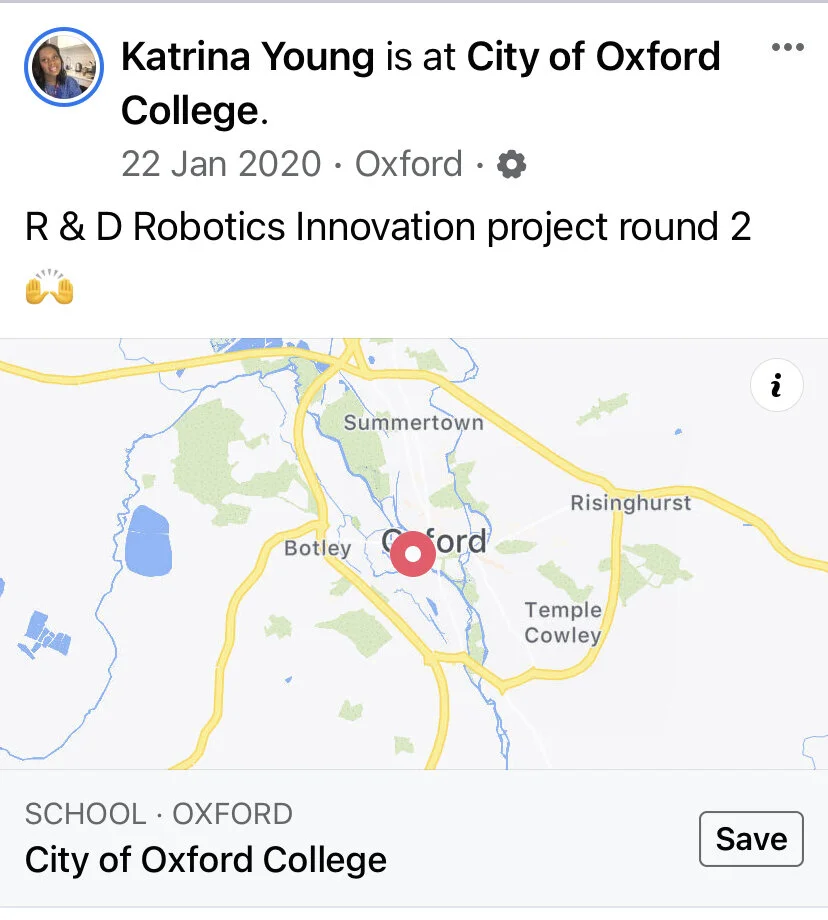Artificial Intelligence in Marketing and Advertising: What You Need to Know
What You Need to Know: Technology, Automation & Robotics
Artificial intelligence, or AI, is a form of technology that mimics human intelligence in computers, robotics, and software. As new enabling technologies make AI more ubiquitous, increasing numbers of AI technologies are being used in marketing and advertising for individualised services.
Artificial intelligence is already helping marketers boost results by delivering data-driven media decisions, analysing consumer sentiment, and improving customer service. Artificial intelligence has the potential to revolutionise marketing and advertising by driving massive growth through unique ROI insights, interactive marketing experiences.
How Artificial Intelligence is Changing Marketing Forever - is this a gd thing?
AI Analysis & Audience Analysis: ai for marketing analysis and audience analysis helps businesses better understand the performance of their current marketing efforts and provides them with audiences to target for their campaigns. Ai for marketing combines data segmentation and audience analysis in order to provide marketers with custom insights about existing customer engagement, which can then be used to improve future activities.
What is AI for Marketing?
Marketers have long been plagued by a very challenging set of questions concerning the effectiveness of marketing. The challenges have been most pronounced in the area of performance management. Just like any other type of management, the shortcomings of performance management have made it difficult to measure marketing's effectiveness. AI and machine learning provide a way out of this problem. AI and machine learning analysis, aided by advanced analytics tools, now allow companies to tackle the performance management problem. These tools can address the challenges posed by low availability of data, analytic capacity, and even software tools that address those challenges. What Machine Learning and Artificial Intelligence Offer to Marketers?
Case studies
How can AI for Marketing be used?
iZettle, a Swedish mobile commerce platform, incorporated Ai for marketing to help build stronger customer relationships. The company built an Ai engine based on image processing that enabled it to segment its customers into cohorts using barcodes on their cards and merchant codes. iZettle could identify these cohorts and build a customised campaign tailored to each customer, including offers and customised messaging. iZettle’s AI strategy resulted in a 30% increase in spend from its existing customer base, particularly through those customers who prefer to use their debit cards. iZettle used €30 million to focus on four key areas:
Using AI to Market on Amazon Amazon uses AI to make product suggestions to customers, which are based on past purchases and browsing histories.
What does it mean for marketers?
AI for marketing is a concept that allows marketers to focus on crafting unique and effective marketing plans with a higher level of accuracy than ever before. Instead of spending hours, or even days, focusing on researching and analyzing current data and results of past marketing campaigns, AI does this for you and creates an easy to understand overall strategy, which gives your marketing efforts a much higher level of success and impact. AI also provides marketers with powerful audience targeting. For example, let's say you have chosen to target car dealerships with your marketing efforts.
AI Analysis & Audience Analysis: ai for marketing analysis and audience analysis helps businesses better understand the performance of their current marketing efforts and provides them with audiences to target for their campaigns. Ai for marketing combines data segmentation and audience analysis in order to provide marketers with custom insights about existing customer engagement, which can then be used to improve future activities.
Ai for Marketing: The majority of AI development is top heavy, infrequent, and inaccessible. ai for marketing solves this by providing business-appropriate, operational AI at scale to enhance your digital channels -- i.e. website, email, display -- in real time. This platform level intelligence gives you the data you need to anticipate and act upon every customer touchpoint, from the arrival of a new lead to their activity on social media.
Conclusion
As the number of AI projects continue to grow, demand for specialist AI services will soar. However, those of us who have been working with the technology have to admit that much of this development is only now starting to transform marketing. Whilst it is easy to assume that AI will play an important role in all aspects of marketing, what it really will do is be the catalyst for more effective marketing campaigns.
Drawbacks
Technology Biases
Coded Bias @ Netflix to learn more about the false in facial recognition technology here shared by Vivian Acquah via a LinkedIn article on ‘AI Erasing My Identity?!’.
How will AI/Automation affect those groups most disadvantaged by structural inequalities? (i.e. lower paid workers, women and young workers, ethnic minorities etc.)
We must identify both the winners and losers of technological advancements and changes if we are to protect the most disadvantaged members of society. This means considering both the effects of datasets, technology used to aggregate AI and Automation.
Governments need to empower citizens with incentives and create opportunities and incentives to study and to learn and achieve developments and skills, in order that AI and Automation developers and programmers come from a range of diverse backgrounds. To allow ethnic minorities more opportunities to upgrade their skills for jobs which are likely to be displaced by technology.
2. On a technical level, how do we ensure that the data we feed AI systems is representative of what the system needs to learn, to ensure that our algorithms are non-biased?
Flag potential areas of risks, give insights on discrimination patterns and help evaluate and correct AI-based decisions or processes that could lead to unintended bias.
If the data we feed AI systems is representative of our society (or subsets of our society) broadly, then it is more likely that the system's predictive capabilities will be inaccurate. If that is the case, then the system will perpetuate previously existing biases. To ensure non-biased algorithms, Lillian Lee offers four tactics for combating societal biases through the selection of training data:
Why algorithms can be racist and sexist - according to Rebecca Heilweil “These systems can be biased based on who builds them, how they’re developed, and how they’re ultimately used. This is commonly known as algorithmic bias. Amid discussions of algorithmic biases, companies using AI might say they’re taking precautions, taking steps to use more representative training data and regularly auditing their systems for unintended bias and disparate impact against certain groups. But Lily Hu, a doctoral candidate at Harvard in applied mathematics and philosophy who studies AI fairness, says those aren’t assurances that your system will perform fairly in the future.
“You don’t have any guarantees because your algorithm performs ‘fairly’ on your old dataset,” Hu told Recode. “That’s just a fundamental problem of machine learning. Machine learning works on old data [and] on training data. And it doesn’t work on new data, because we haven’t collected that data yet.”
Here’s another thing to keep in mind: Just because a tool is tested for bias — which assumes that engineers who are checking for bias actually understand how bias manifests and operates — against one group doesn’t mean it is tested for bias against another type of group. This is also true when an algorithm is considering several types of identity factors at the same time: A tool may deemed fairly accurate on white women, for instance, but that doesn’t necessarily mean it works with black women.
In some cases, it might be impossible to find training data free of bias. Take historical data produced by the United States criminal justice system. It’s hard to imagine that data produced by an institution rife with systemic racism could be used to build out an effective and fair tool.”
Whole departments could potentially be replaced with AI and Robotics. When I speak to any parents I advise that you teach your children more about technology. As well as your elders etc.
Diversification, is imperative in today’s world in order to thrive and in some cases survive. Of course you can not replace humans for everything. But those who pay attention, well.... ***
Many small business owners never pay attention Technology, Data and Systems, it doesn’t feel sexy, but it can save your livelihood.
Last week I shared with a Silicon Valley team and Consulted with Salesforce on how we can Humanise Technology and Robotics to save businesses during uncertain times.
Looking for Digital Marketing Strategy and Ideas that are Digitally Inclusive ? Contact me here.






